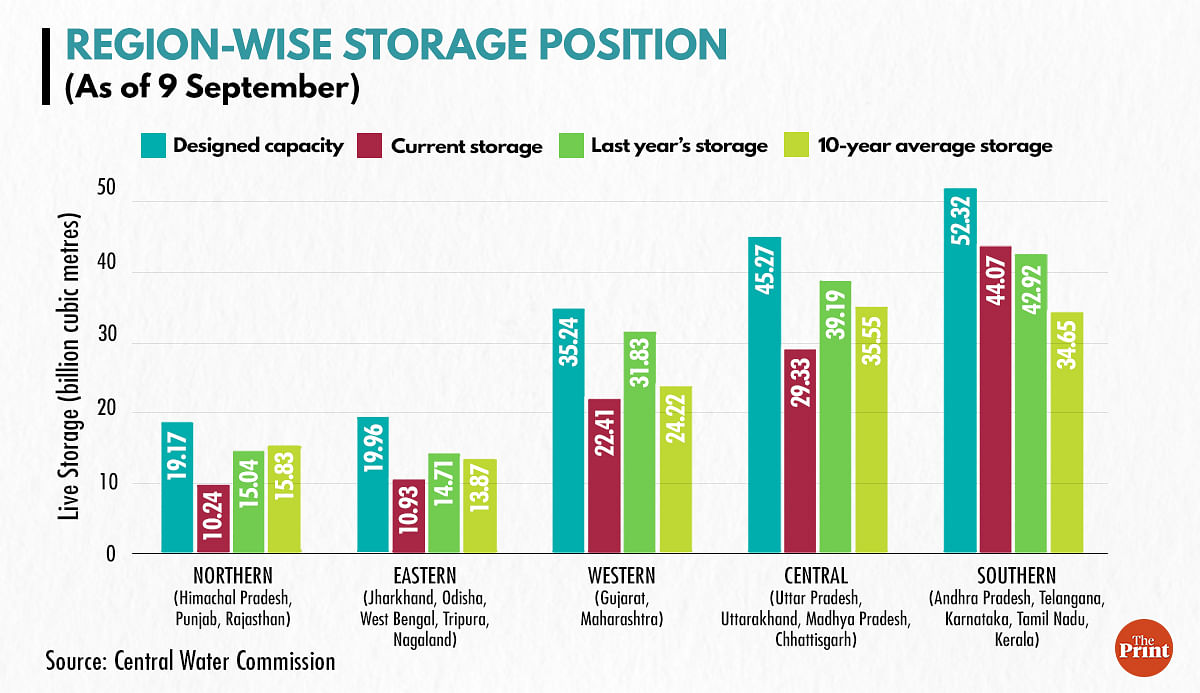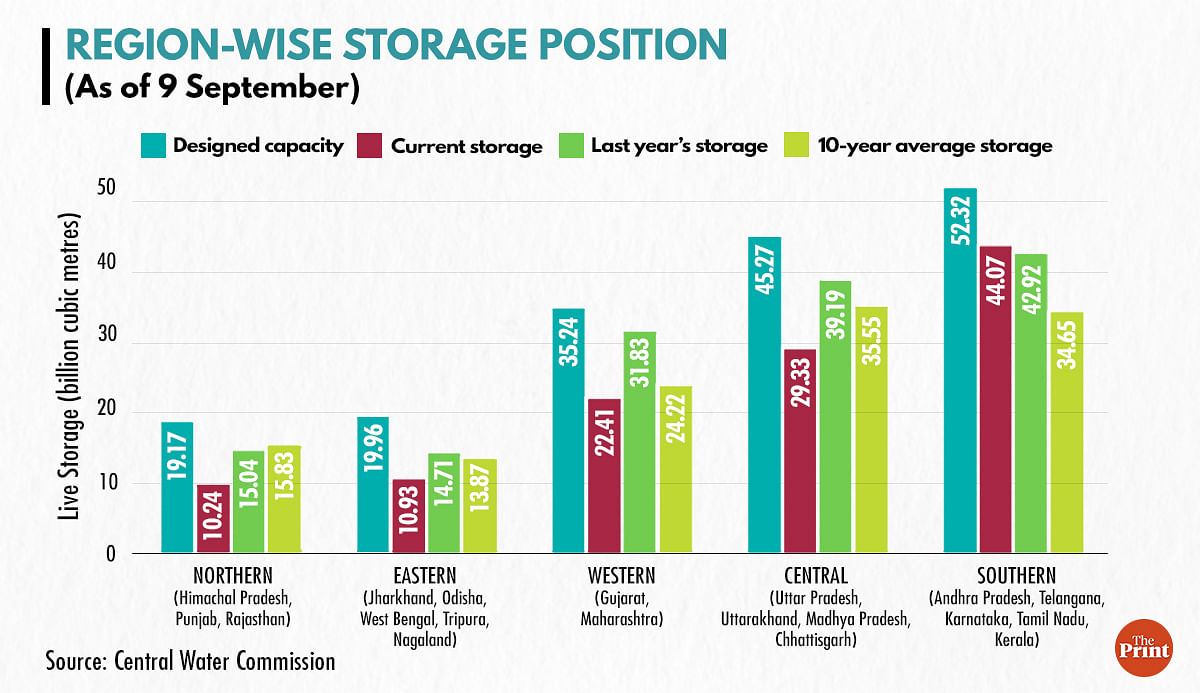Form of words:
New Delhi: Due to less rainfall this year, the low level of reservoirs may affect the rabi sowing season from October-November.
The crisis could be exacerbated by shortages in stocks of di-ammonium phosphate (DAP) – the second largest consumed fertilizer in the country after urea – and other key fertilisers.
Water levels in reservoirs in major agricultural states like Uttar Pradesh, Madhya Pradesh, Gujarat, Punjab, Maharashtra and Rajasthan have fallen due to deficient monsoon rainfall across the country.
Meanwhile, the disruption in the global supply and logistics chain due to the pandemic has led to shortage of fertilizers. This has also increased the prices of fertilizers globally.
According to reportsAs a result of the rise in global prices, India has reduced its imports, further reducing the fertilizer stock in the country.
The crisis threatens to hamper the sowing of rabi crops in states that are largely dependent on soil moisture and water availability in reservoirs.
The plight of the future of Rabi crops already comes in the background of lack of acreage in Kharif crops across the country.
Read also: Modi government increased the MSP of Rabi crops, a bigger jump in pulses and oilseeds than wheat
Reservoir level worrying
According to Reservoir Storage Bulletin As on September 9, the available storage in 130 reservoirs across the country is only 81 per cent of the corresponding period last year and 94 per cent of the average storage of last 10 years.

The scenario is dire as reservoir levels in almost all regions of the country, except the south, are below last year’s levels, and below the average storage of the last 10 years.
a report good Credit Suisse by Financial Services also pointed out that if the recent rains do not pick up, the challenge will be soil moisture and low reservoir levels.
According to the bulletin, major agricultural states such as Odisha, Punjab, Uttar Pradesh, Madhya Pradesh and Gujarat have seen a fall of more than 20 per cent from the normal rainfall this year. The situation is particularly dire in the Gujarat and Saurashtra region, which have seen a deficit of 43 and 35 per cent, respectively.
Major agricultural powerhouse states like Punjab, which is the largest producer of wheat, had a shortfall of 25 per cent.

Shashi Shekhar, former secretary of the Ministry of Water Resources and Ganga Rejuvenation, told ThePrint, “Since the reservoirs are not full, it means there is no soil moisture in the area. Agriculture will have two concerns: First, the lack of water in the reservoirs will not support the crop. Second, since there is not enough moisture in the soil, there is also not enough groundwater available. Hence major crops like wheat will not get the required water.
He said the long-term solution lies in changing the cropping pattern.
Fertilizer shortage
This crisis has been further aggravated by the shortage of DAP manure.
as per latest statistics From the Department of Fertilizers, the maximum DAP shortfall – around 24 per cent – has been reported in Madhya Pradesh, a state that is not only a major producer of the rabi food grain wheat, but also major rabi pulses and oilseeds such as gram. and mustard.
Fertilizer shortage is also severe in states like Maharashtra and West Bengal, where DAP availability is less than 20 per cent less than the requirement.

Apart from this, there is also a shortage of Murate of Potash (MOP) in many states like UP, Telangana, West Bengal and Jharkhand. In major agricultural states like Uttar Pradesh, there is a shortfall of about 12 per cent in MOP before rabi sowing.
Rabi crops, which include major pulses and oilseed crops such as gram and mustard, have already seen severe inflation this year as the country was hit by a second wave of the Covid-19 pandemic. whereas mustard oil prices 200 per liter has skyrocketed, the prices of various pulses have also seen a sharp rise, forcing the government to withdraw them. pandemic relief free meal plan.
Read also: Flat prices, late payments, rising costs – why western UP’s sugarcane farmers are in trouble
subscribe our channel youtube And Wire
Why is the news media in crisis and how can you fix it?
India needs free, unbiased, non-hyphenated and questionable journalism even more as it is facing many crises.
But the news media itself is in trouble. There have been brutal layoffs and pay cuts. The best of journalism are shrinking, yielding to raw prime-time spectacle.
ThePrint has the best young journalists, columnists and editors to work for it. Smart and thinking people like you will have to pay the price for maintaining this quality of journalism. Whether you live in India or abroad, you can Here.